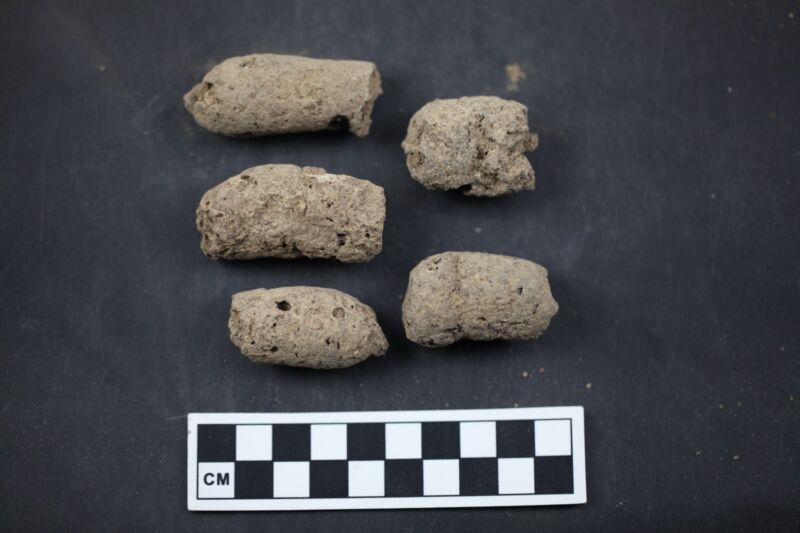Archaeologists now have a handy new tool for analyzing paleo poop

Enlarge / Ancient poo samples: H35 (Ash pit number 35) coprolites from Xiaosungang archaeological site, Anhui Province, China. (credit: Jada Ko, courtesy of the Anhui Provincial Institute of Cultural Relics and Archaeology)
Combing through samples of ancient feces probably isn't going to be many people's idea of a roaring good time. However, for archaeologists keen on learning more about the health and diet of past populations-as well as how certain parasites evolved, the evolutionary history of the microbiome-such samples can be a veritable goldmine of information.
Yet it can be difficult to determine whether fecal samples are human or were produced by other animals, particularly dogs. Now an international team of scientists has devised a new method of doing so that combines host DNA and gut microbiome analysis with open source machine-learning software, according to a new paper in the journal PeerJ.
The challenge of determining whether paleofeces and coprolites are of human or animal origin dates back to the 1970s. Usually, only those samples found with human skeletons or mummies could be designated as being of human origin with any certainty. Exceptions could be made for samples found in ancient latrines, since they are highly likely to be human; samples found in trash deposits, however, are more ambiguous.
Read 9 remaining paragraphs | Comments